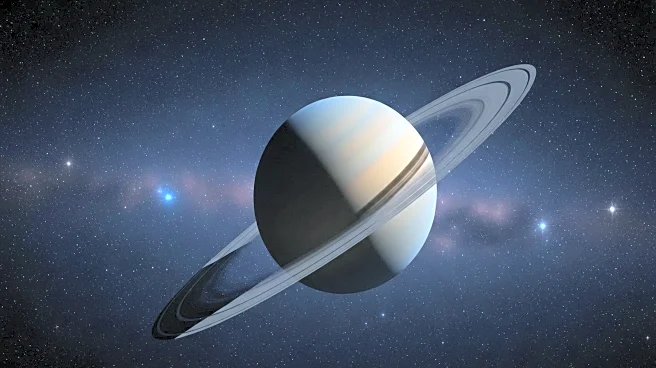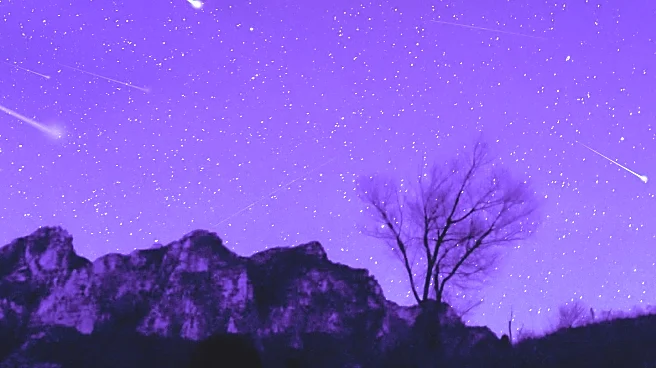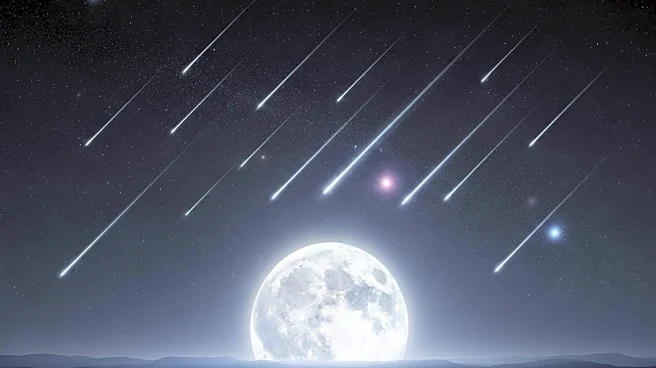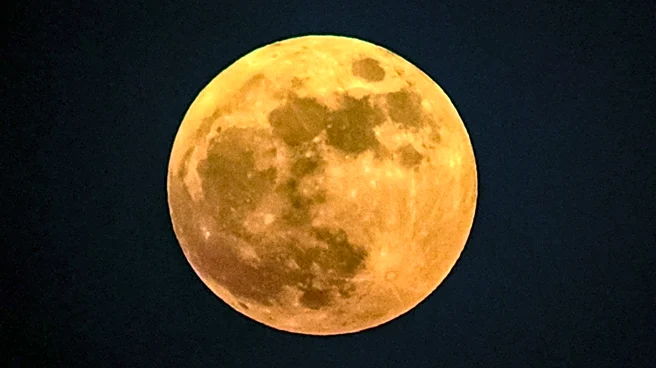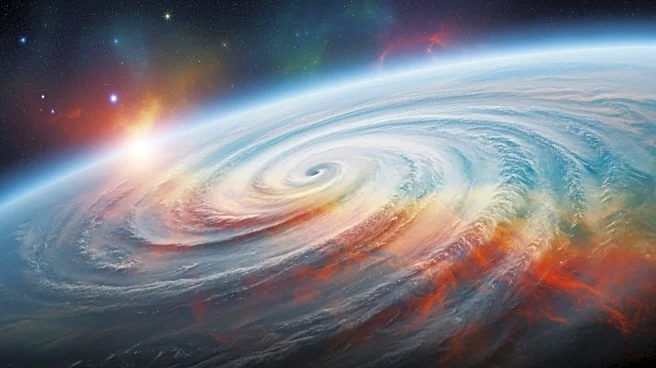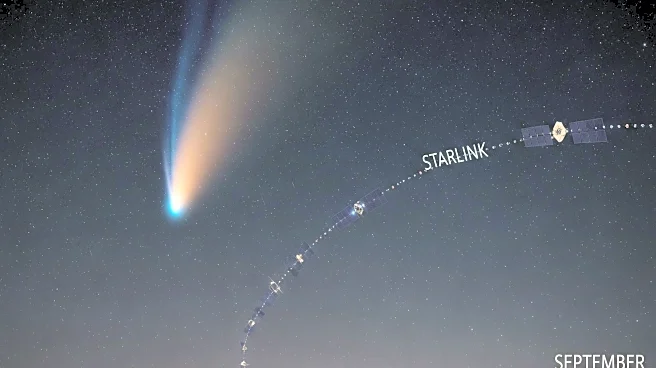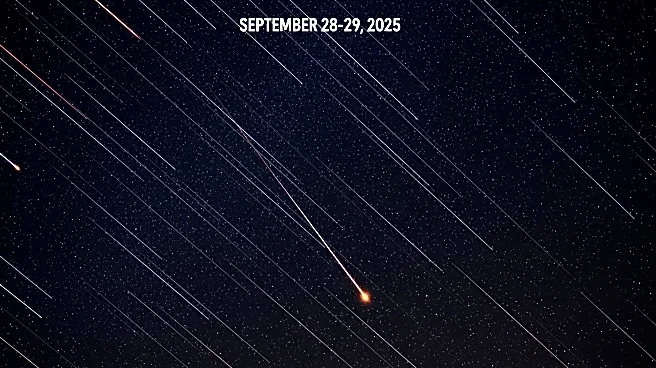What's Happening?
Astronomy Magazine has detailed the celestial events visible in the Southern Hemisphere during October 2025. Saturn, despite reaching opposition in late September, remains a prominent feature in the night sky, located in the northeastern corner of Aquarius. The planet's rings appear nearly edge-on, allowing observers to focus on atmospheric details and its moons. Mercury and Mars will be visible in the western evening sky, with a notable conjunction occurring on October 19. Jupiter will be visible after midnight, positioned in eastern Gemini, and Venus will be visible during morning twilight. Additionally, a waxing crescent Moon will occult Antares in Scorpius on October 25, visible from southern South America.
Why It's Important?
These celestial events offer significant opportunities for astronomers and sky enthusiasts to observe and study planetary movements and interactions. Saturn's visibility provides a chance to examine its atmospheric details and moons, while the Mercury-Mars conjunction offers insights into planetary dynamics. Jupiter's presence in Gemini allows for detailed observation of its atmosphere and moons. The occultation of Antares by the Moon is a rare event that can provide valuable data for astronomers studying stellar and lunar interactions. These events contribute to the broader understanding of planetary science and celestial mechanics.
What's Next?
Observers in the Southern Hemisphere can prepare for these events by setting up telescopes and planning observation sessions. Astronomy clubs and educational institutions may organize viewing events to engage the public and promote interest in astronomy. Researchers may use these opportunities to gather data for ongoing studies of planetary atmospheres and celestial phenomena. The visibility of these events may also inspire amateur astronomers to document and share their observations, contributing to citizen science initiatives.
Beyond the Headlines
The visibility of these celestial events highlights the importance of preserving dark skies and minimizing light pollution, which can hinder astronomical observations. The events also underscore the cultural significance of astronomy, as ancient stories and myths are often tied to constellations and planetary movements. The conjunctions and occultations serve as reminders of the dynamic nature of the universe and the ongoing need for scientific exploration and discovery.

